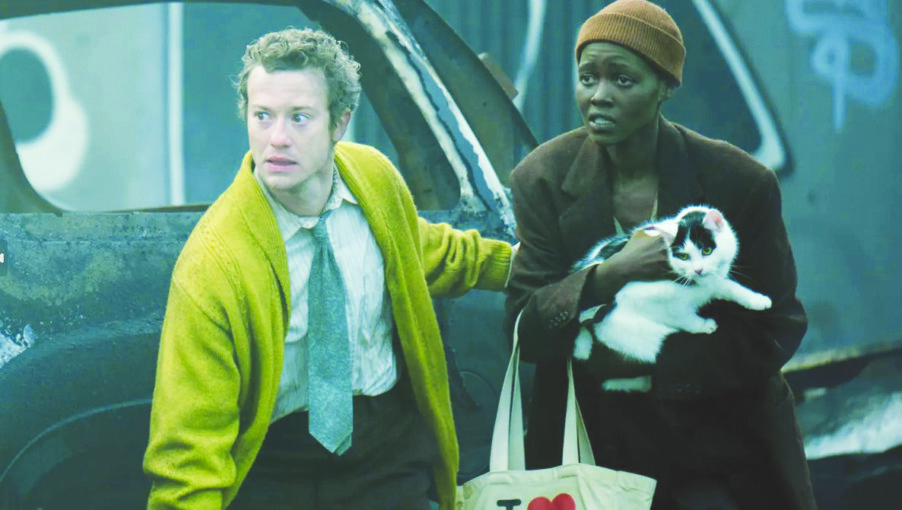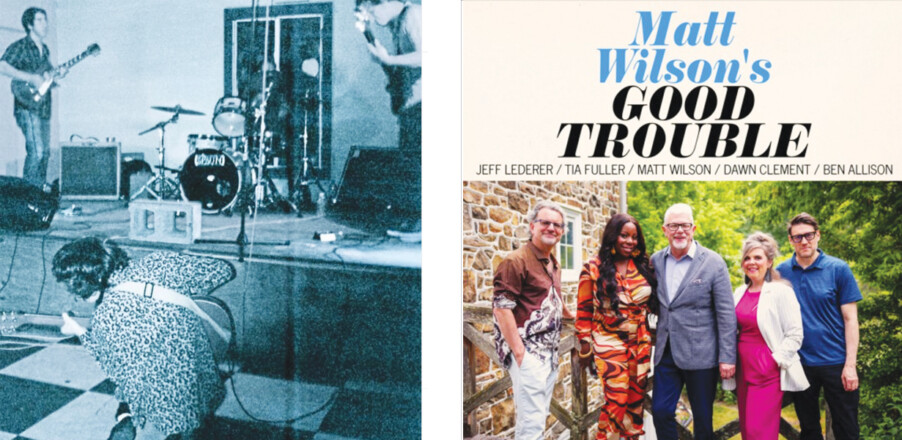A Quiet Place: Day One (PG-13 )
If you are feeling cynical and grumpy about the state of movies, the alien thriller A Quiet Place: Day One might actually be the perfect downbeat (but uplifting maybe?) movie for you.
Let’s consider this one sort of backward from how I usually do things. I’ll try not to spoil things along the way but if you want to go in to this movie with a complete blank slate — which somehow I did? — then just know that this one is worth seeing, probably even worth seeing specifically in the theater, where it holds all your attention. It is one of these “A Something-Franchise Saga” type movies — like Mad Max saga movie Furiosa or Star Wars saga movies Rogue One or Solo — but it is the least annoying of this kind of cinematic universe-building endeavor that I’ve seen in a while. And it hooks in even less to the Emily Blunt/John Krasinki family story of the first two A Quiet Place movies than those aforementioned movies do to their franchises. The first two A Quiet Places are not necessary viewing before seeing this one. All you need to know is that what we’re dealing with is aliens and those aliens have particularly good hearing and stompy-bitey abilities but not great vision. Be super quiet and they won’t “see” you.
About half an hour into this movie I had two issues with it which, by the end, I decided were not actually problems but excellent, tone-appropriate features. Issue 1: This movie seems to have very minimal stakes. Issue 2: The more time we spend with the aliens, the less interesting and impressive and “embodiment of all fears” they are. But, as I said, by the end of this movie my feeling was: “This movie has no stakes and these stupid aliens don’t matter! Cool!” So many movies have set as their central struggle “the end of the world” it feels fun and subversive that a movie about an actual apocalypse has kind of “meh” villains and very minor approach to what it counts as accomplishments.
Lupita Nyong’o, who IMDb says is called “Samira” even though we probably only hear her name said once, maybe twice, and I didn’t clock it at all, carries this movie. She is the focus of nearly every scene and we see her move through a variety of emotions including fear and defiance. She is excellent at delivering her character primarily through facial expressions, the way she holds her body and little gestures. Even though we’re only seeing Samira through what I think is just a few days, you feel, by the end, like you understand her whole life, or at least her full personality.
The movie begins just before the alien attack — or at least before Samira and other people in New York City realize they are being attacked by aliens. We get to see some of who Samira is coming into this situation and then the very 9/11-reminiscent images of the attack (all white dust everywhere, obscuring what is happening). Once, well, the dust settles, Samira makes a plan, which is kind of excellent, extremely relatable and involves her traveling through the streets of New York with her cat, Frodo. Along the way, various people (Alex Wolff, Djimon Hounsou, Joseph Quinn) are intensely important to the present moment, though that moment doesn’t always last.
Day One has a short-story feel, where we dive deep into someone’s life but aren’t exactly there for a full arc, but it also offers enough closure (and a nice musical button to the movie) to give you the sense of resolution even if, as we know from the other movies, the overall story continues. Is this bleak story wryly offering hope? Not sure, but it’s definitely offering a better movie experience than I expected. B+
Rated PG-13 for terror and violent content/bloody images, according to the MPA on filmratings.com. Directed by Michael Sarnoski with a screenplay by Sarnoski and a story by John Krasinski and Michael Sarnoski, A Quiet Place: Day One is a tidy hour and 40 minutes long and distributed in theaters by Paramount Pictures.
Despicable Me 4 (PG)
Gru and family and Minions attempt to assume new identities after a vengeance-seeking villain escapes from villain prison in the animated movie Despicable Me 4.
Gru (voice of Steve Carell) and wife Lucy (voice of Kristen Wiig) are a happy family with adopted daughters Margot (voice of Miranda Cosgrove), Edith (voice of Dana Gaier) and Agnes (voice of Madison Polan); their new baby, Gru Jr. (voice of Tara Strong), and all of Gru’s Minions (all voiced by Pierre Coffin), who help Gru on his Anti Villain League villain-catching missions. At a villain school reunion, Gru captures Maxime Le Mal (voice of Will Ferrell), a villain who has harnessed the power of cockroaches. The AVL takes Max to prison but he breaks out, reunites with his girlfriend Valentina (voice of Sofia Vergara) and swears revenge on Gru. Fearing what Max and his cockroaches can do, the AVL gives Gru and family new identities and resettles them in the snooty town of Mayflower. As you might expect, the family doesn’t blend right in, making it even more likely that Max may eventually find them.
Meanwhile, most of the Minions are hiding out with the AVL and, as part of an experimental program, five of them have been supercharged to become Mega Minions, with powers like laser-beam eye and super stretchiness. Unsurprisingly, the Minions are very destructive when they attempt to save the day.
All of this story business is really just a framework to hold the collection of scenes — scenes whose relationship to the overarching story varies but that all hold that standard Minion Looney-Tunes-like quality of goofy physical humor and mild violence between Minions that reads as sibling-vs.-sibling tussling. The bits? Gru Jr., who seems perennially annoyed with his dad, is forever sneezing on him, squirting fruit mush at him or tricking him into smooshing his face into a banana. The Mega Minions are, as mentioned, kind of bad at superhero-ing. Of the Minions who are with Gru and family, one spends most of the movie stuck in a vending machine. Lucy, posing as a hairstylist, accidentally burns most of a woman’s hair off attempting to color it — that one is probably one of the less funny and highlights the “gotta give everybody a thing to do” problem with having so many characters in the Gru story at this point. The movie also adds a teen character, wannabe villain Poppy (voice of Joey King), who feels she doesn’t really need to be there and a tighter movie would have found a way to give her actions to existing characters.
But then again, story and characters and all of that aren’t really why we’re here. It’s the Minions and the spirit of wackiness in general that are really the stars here. The Minions’ scenes of tomfoolery and kid-like troublemaking are usually the ones that get the biggest laughs. And laughs and silliness really seem like the core of this movie, as least as much but probably more even than the, like, emotional growth of Gru as a father or whatever.
All of which is to say that my kids, and the surrounding kids in the theater, seemed to have a good time (except for the toddler who fully horror-movie-heroine screamed at the sight of Max in all of his cockroachiness; maybe this is not one for the littlest littles). “Very funny” and “I liked the fighting” were their reviews and I feel like that reaction — in the well-paced hour-and-34-minute movie — is exactly why you watch it. B
Rated PG for action and rude humor, according to the MPA on filmratings.com. Directed by Chris Renaud and Patrick Delage and written by Mike White & Ken Daurio, Despicable Me 4 is an hour and 34 minutes long and distributed by Universal Studios.
Featured photo: The Quiet Place: Day One.






